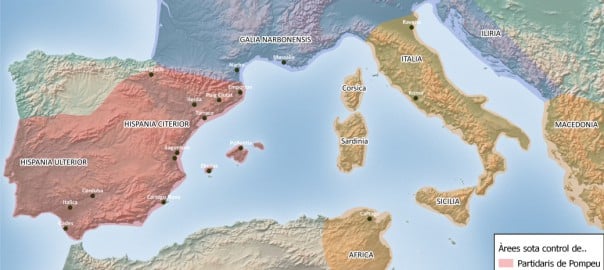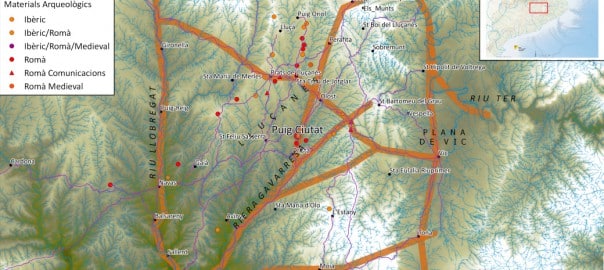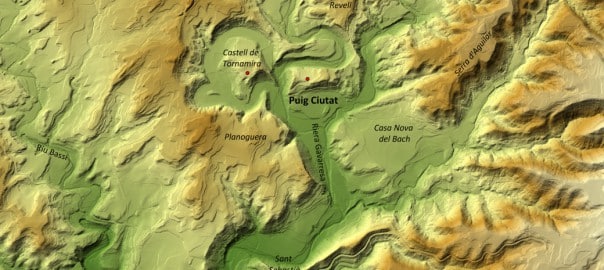The Civil War between Julius Caesar and followers of Gnaeus Pompeius (BC 49-45)
The excavations carried out so far have given a date for the destruction of Puig Ciutat at the end of the Roman Republic, possibly during the Civil War between followers of Julius Caesar and followers of Gnaeus Pompeius. The map shows the area of influence of the two sides in the moments before the Battle of Ilerda (49 BC), when Caesar had control over Gaul and Pompey over a large part of Hispania. The regions under the control of the Roman Senate also supported Pompey.
Historical sources mention the movement of Caesar’s troops from Marseille to Hispania via unidentified points of the Pyrenees to confront Pompey’s followers, who had taken up position in Ilerda (Lleida).


